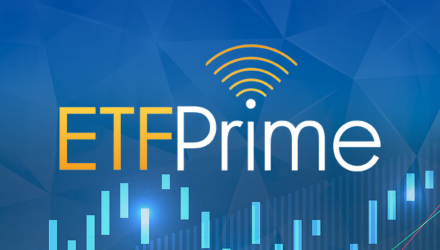On this week’s episode of ETF Prime, host Nate Geraci is joined by Dave Nadig, director of research and CIO of ETF Trends, to discuss ARK Invest’s filing for a new interval fund, the rebalancing cost of passive ETFs, and the sharp price swings in stocks like Amazon and Facebook. Later, John Bowman, executive vice president of the CAIA Association, is on to discuss alternative investments, crypto and tokenization, as well as democratizing investing. The podcast closes with Robert Cantwell, founder of Upholdings, discussing the first hedge fund to ETF conversion fund, the Upholdings Compound Kings ETF (KNGS).
The discussion opens with ARK’s filing for an interval fund which gives the firm access to private placements that might have less liquidity but still fall within the investing thesis of innovative and disruptive technologies. Interval funds are different from exchange traded funds on a number of levels, but primarily in that they hold both public and private companies within their portfolio and do not trade on exchanges. Redemption occurs at set intervals.
“The interval fund is basically a closed-end fund that allows you to get some liquidity once a quarter; it’s a lovely way to thread the needle, I think, on these kinds of exposures,” Nadig says.
Moving on, Nadig and Geraci discuss the recent report that index funds are losing $4 billion annually in trading costs based on a research paper. While Nadig doesn’t agree with the methodology used and the ultimate findings, he does believe it brings an important issue forward in questioning how index rebalances move prices forward.
The entry into the large indexes gives companies access to more liquidity, derivatives, and the like, and warrants the increase in price and basis points that a company gains when joining one of the large indexes.
“The question is, knowing indexes are going to rebalance, what would be the optimal way for the index shareholder to experience that change of the 500th stock dropping out and the new stock coming in?” Nadig queries.
The pair also discusses the role of active managers and retail investors in price discovery and how passive funds impact float for stocks. While it can have an impact on short-term trading and short-term moves, in the long term, it doesn’t have much impact, Nadig believes.
Alternatives Investing and a Discussion on KNGS
Up next was John Bowman to talk about the CAIA Association and the growing interest in alternatives that they have been seeing. For now, there is a gap in the knowledge and expertise being practiced within alternatives by the large wealth management groups and institutional investors, and it’s a gap that Bowman hopes CAIA can help bridge for individual advisors and retail firms.
“We do think that a more wider set of alternatives is appropriate for a long-term investor and their clients and when you speak of the new 40 (of a 60/40 traditional portfolio), specifically given the almost lack and elusive nature of yield in traditional public fixed income, we think things like private debt and infrastructure are going to start to become perhaps the natural source, or new flavor if you will, for stable cash flows that are predictable and perhaps less volatilely related to the economic cycle,” Barrowman says.
Alternatives discussed included crypto and blockchain, the tokenization of assets as a path to investing in alternatives, and then the democratization of investing.
Last on was Robert Cantwell to discuss the Upholdings Compound Kings ETF (KNGS), the first ETF to invest exclusively in companies that are driving up share price through reinvestment, acquisition, or share buybacks. Securities within the fund are positioned on a risk-reward basis, and KNGS is actively managed.
KNGS tends to be more growth-oriented in general, as companies that are compounding their value typically tend to be positioned in growth industries, Cantwell explains, which means it’s been a challenging time for KNGS.
“It has been a challenging period for investors that are focused on businesses and the cash flow that they’re going to generate in the future,” Cantwell says. Companies are competing against earnings from last year, which saw some of the strongest growth in almost four decades, and it’s creating a difficult environment for growth stocks in particular as negative reported earnings/fundamentals get amplified by negative media coverage.
Listen to the Entire ETF Prime Episode Featuring Dave Nadig:
For more ETF Prime podcast episodes, visit our ETF Prime channel.

